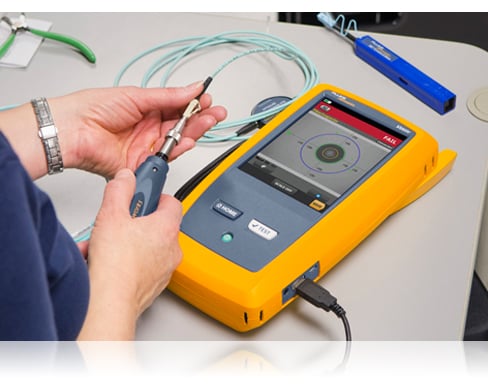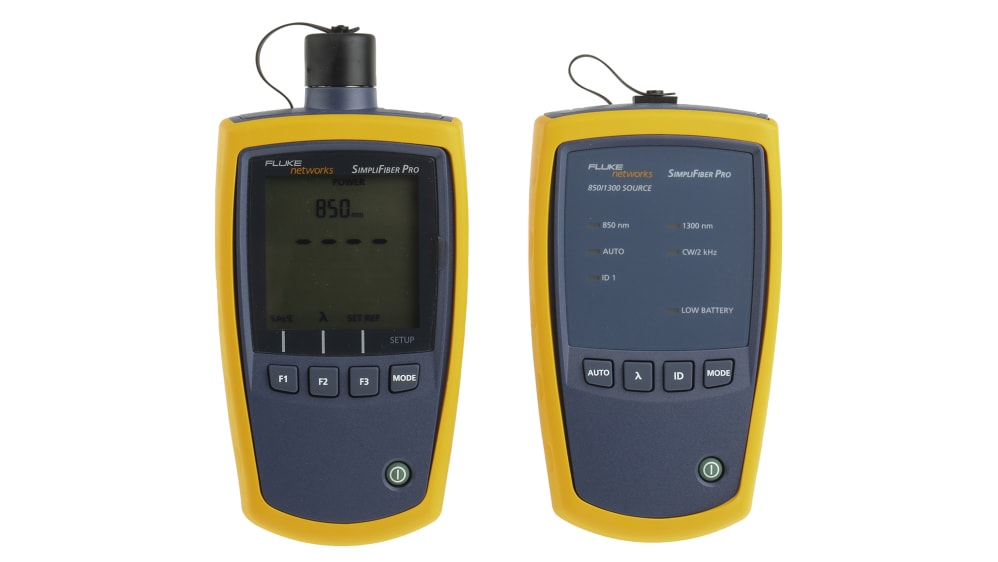Discover the Importance of Optical Fibre Testing in Modern Telecom
In the world of modern telecommunications, the significance of optical fibre testing can not be overstated, as it serves as the foundation for ensuring network dependability and performance. By executing routine testing protocols, drivers can preemptively recognize potential issues such as signal deterioration, therefore guarding versus disturbances that can show pricey. Advanced strategies like Optical Time-Domain Reflectometry play a crucial duty in this procedure, yet several might overlook the broader implications of these practices. What are the specific benefits that regular screening offers, and how might it shape the future landscape of telecoms?

Understanding Optical Fibre Screening
Optical fibre screening is an essential process in telecoms that makes certain the stability and performance of fiber optic networks. This screening includes a series of treatments created to assess the physical and useful attributes of optical fibers - ofda. Trick parameters analyzed include optical power loss, data transfer ability, and fault area, which are necessary for maintaining top notch interaction web links
The screening process generally entails using customized tools such as Optical Time-Domain Reflectometers (OTDR) and Optical Power Meters. OTDRs are used to determine and define mistakes, entwines, and adapters within the fibre, while power meters determine the transmitted light signal strength to establish efficiency.
Additionally, testing is carried out at numerous stages, consisting of throughout setup, upkeep, and troubleshooting, to guarantee that the network fulfills industry criteria and operational needs. Compliance with criteria set by organizations like the International Telecommunication Union (ITU) and the Telecoms Market Association (TIA) is extremely important.
Advantages of Regular Checking
Regular screening of optical fibres returns various benefits that significantly improve network integrity and performance. One of the main advantages is the very early discovery of potential concerns, such as breaks or degradation in the fiber, which can bring about costly downtime if left unaddressed (optical fibre testing equipment). By identifying these problems proactively, telecommunications carriers can minimize service interruptions and guarantee regular connection for their consumers
In addition, normal screening helps to maintain the integrity of signal quality. As optical fibres age, their performance can be impacted by aspects such as ecological problems and physical anxiety. Routine assessments permit for the monitoring of signal loss and general transmission efficiency, guaranteeing that the network runs at ideal degrees.
Another substantial advantage is compliance with sector criteria. Routine testing sustains adherence to regulative needs, thus mitigating legal and monetary risks connected with non-compliance. Furthermore, it enhances the overall life expectancy of the fiber facilities by helping with timely maintenance and fixings.

Typical Examining Methods
Evaluating optical fibres uses numerous methods to guarantee the honesty and efficiency of telecoms networks. Among the most typical strategies is Optical Time Domain Name Reflectometry (OTDR), which evaluates the entire length of the fiber by sending out a pulse of light and measuring the reflections brought on by flaws or breaks. This technique supplies thorough details concerning the area and extent of mistakes.
An additional widespread approach is the usage of Optical Power Meters, which measure the amount of light transmitted through the fibre. This technique helps determine the loss of signal strength, guaranteeing that it meets industry standards. Additionally, Visual Fault Locators (VFL) are employed to recognize breaks or extreme bends in the fiber by predicting a noticeable laser light into the cable television.
Insertion loss testing is also vital, as it measures the loss of signal power resulting from connections and splices within the network. The usage of Polarization Mode Dispersion (PMD) testing assesses the impact of fibre qualities on signal integrity.
Each of these approaches plays an essential function in preserving the performance and reliability of optical fibre networks, inevitably adding to seamless telecoms operations.
Influence On Network Efficiency
The stability and efficiency of optical fiber networks directly affect general network efficiency. In contemporary telecoms, the efficiency of information transmission counts heavily on the high quality of the optical fibers utilized. Any destruction my sources in the fibre's condition-- whether as a result of physical damage, contamination, or too much bending-- can bring about boosted attenuation and signal loss, dramatically affecting information honesty and speed.
Normal optical fibre screening is necessary to identify and fix prospective issues prior to they manifest as network failings or stagnations. Methods such as Optical Time Domain Name Reflectometry (OTDR) and insertion loss testing make it possible for specialists to gauge the performance of fibre web links accurately. These tests not just evaluate the physical problem of the fibers but likewise ensure compliance helpful resources with sector requirements, therefore protecting the network's dependability.
Moreover, a well-kept optical fibre network adds to lowered operational costs and enhanced consumer complete satisfaction, as end-users experience fewer disturbances and greater information rates. Ultimately, the focus on rigorous optical fibre testing practices works as a foundation for maintaining robust telecoms framework, ensuring that company can satisfy the expanding demands for data transfer and connection in today's electronic age.
Future Patterns in Examining
As we look in advance, advancements in technology are poised to improve optical fiber screening in telecommunications. The increase of automation and expert system (AI) is expected to enhance the performance and precision of you can try these out testing procedures. Automated screening systems can perform thorough analyses with marginal human treatment, substantially minimizing the capacity for errors and speeding up time-to-deployment.
Furthermore, the integration of machine learning formulas will certainly allow predictive upkeep, permitting network providers to foresee possible problems before they escalate right into failures. This proactive approach not just boosts network dependability however also optimizes operational costs.
An additional emerging trend is the growth of mobile testing tools that use real-time analysis - ofda. These tools will encourage service technicians to carry out on-site diagnostics swiftly, promoting quicker resolutions and improving solution high quality
The expansion of 5G networks additionally necessitates the advancement of testing techniques. As data transfer needs enhance, traditional testing strategies may no more are sufficient. Innovative options such as optical time-domain reflectometry (OTDR) and advanced spectral evaluation will come to be important in guaranteeing the honesty and performance of high-speed links.

Final Thought
Finally, optical fibre screening is essential for making sure the honesty and dependability of modern-day telecommunications networks. Routine screening practices not only assist identify prospective issues such as signal loss and faults yet also add to boosted network performance and client complete satisfaction. As the need for smooth connectivity remains to grow, the adoption of innovative screening techniques will certainly play a crucial role in maintaining top notch network criteria and sustaining the evolving landscape of telecommunications.